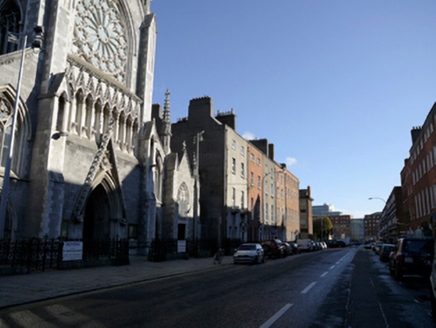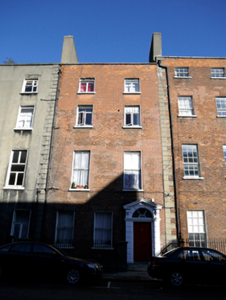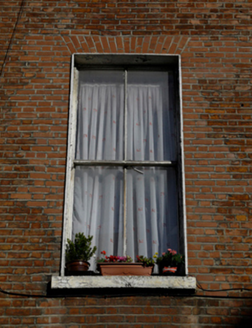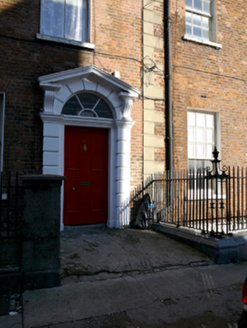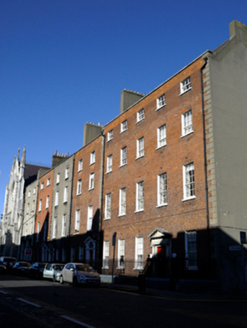Survey Data
Reg No
50010672
Rating
Regional
Categories of Special Interest
Architectural, Artistic
Original Use
House
In Use As
House
Date
1750 - 1770
Coordinates
315453, 234941
Date Recorded
25/10/2011
Date Updated
--/--/--
Description
Terraced two-bay four-storey house over exposed basement, built c.1760. M-profile slate roof, pitched to front pile with two hipped sections to rear. Roof hidden behind parapet wall with granite coping and replacement uPVC rainwater goods breaking through to north end. Large rendered chimneystack with clay pots to north party wall spanning front to rear and further pair of chimneystacks to south party wall. Red brick walls laid in Flemish bond, rebuilt to top floor with several repairs, set on granite plinth course over rendered basement walls. Cement render finish to rear elevation. Gauged brick flat-arched window openings with patent rendered reveals and painted granite sills. Replacement timber casement windows to second and third floors, and replacement one-over-one pane timber sliding sash windows to ground and first floors. Round-headed door opening with rusticated pedimented painted stone doorcase. Replacement timber door flanked by rusticated piers on plinth blocks supporting stepped lintel cornice with pair of scrolled console brackets supporting open pediment housing early spoked timber fanlight with glazed hub. Door opens onto concrete platform flush to front pavement and bridging basement. Platform and basement enclosed by wrought-iron railings and corner piers on moulded granite plinth wall. Single-storey industrial structure to rear fronting onto Dominick Place.
Appraisal
This Georgian townhouse was built by the stuccodore, Robert West, and is documented as retaining good Rococco plasterwork ceilings. It now forms part of an intact stretch of five Georgian townhouses while providing a fitting backdrop to the much later Saint Saviour’s Church. The rusticated doorway is the principal feature of the facade, and the setting is enhanced by the plinth wall and railings to the basement area. Formerly one of the finest Georgian streetscapes in north Dublin, the majority of the street was demolished in the 1950s and 1960s. the land had been bought by a physician, Christopher Dominick, in 1709, bit was not developed until after his death in 1743 by his widow.
